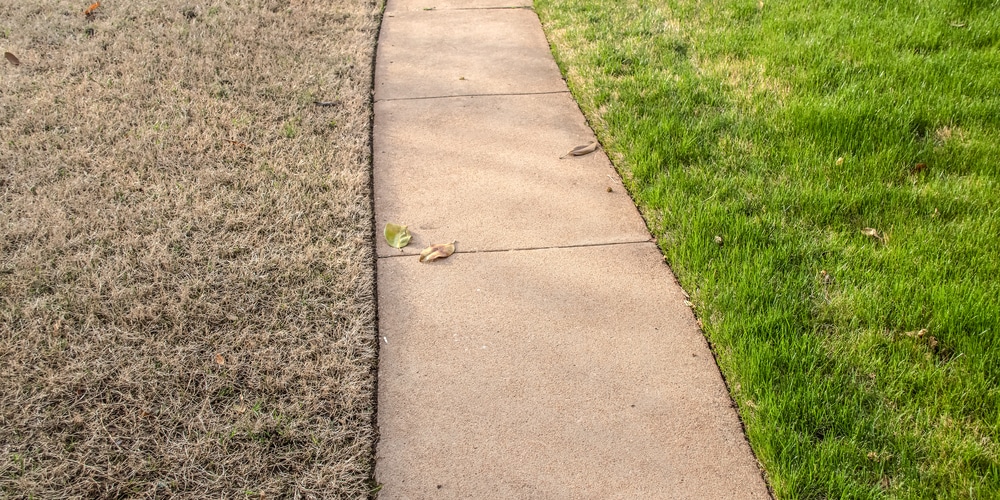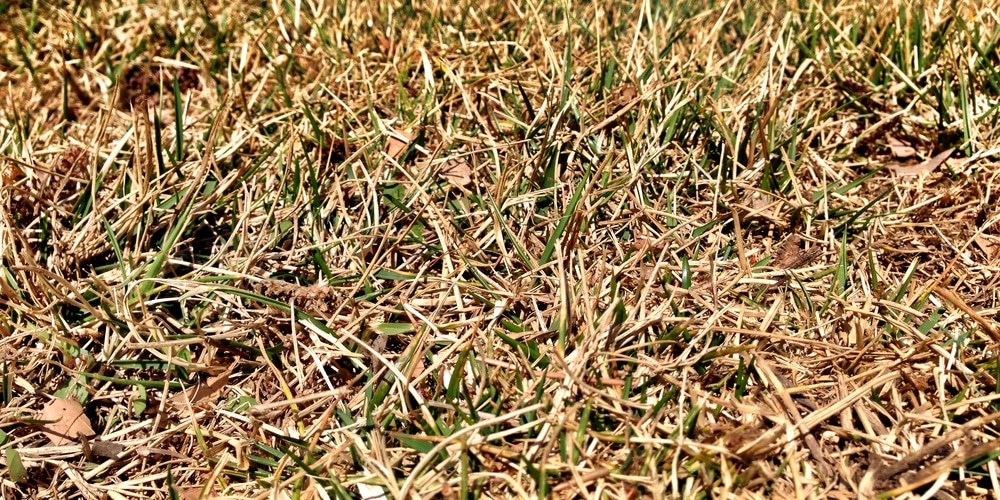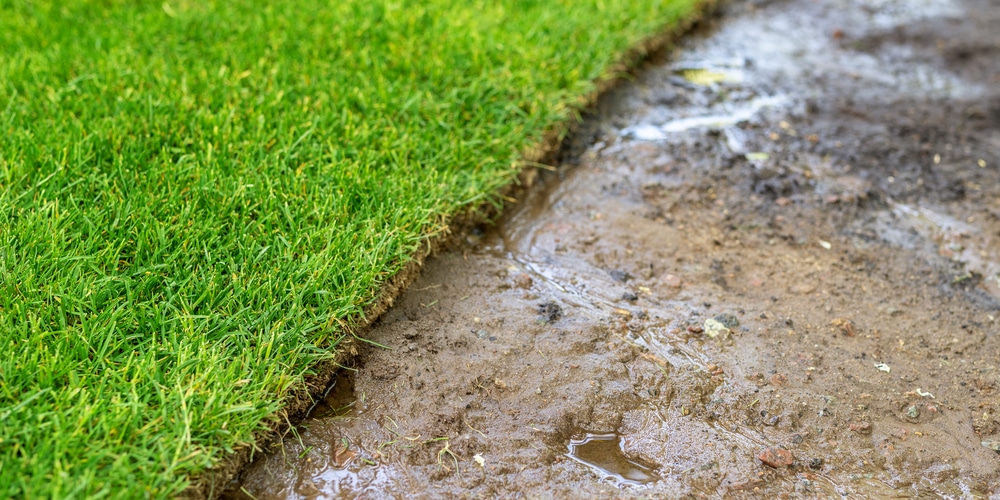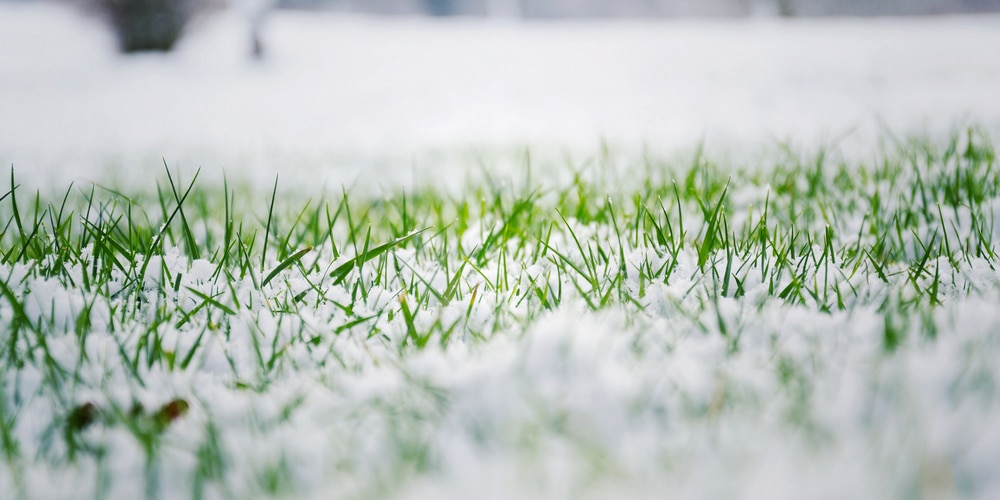Grass turns brown in winter for many different reasons, depending on the variety of grass. The most common cause is due to cold weather or a lack of sunlight. A hard freeze will kill the grass by damaging it beyond repair, but some grass types survive the winter even after they have turned brown because they can regrow in springtime when conditions improve.
Let’s look at why your lawn may turn brown in winter.
What is Warm Season Grass?

Warm-season grasses have their growing season from early spring until late fall. In the winter, they will become dormant and, depending on the climate, will turn yellow or brown. Species native to warmer climates like Bermuda or Zoysia grass are more likely to turn brown in winter because they are accustomed to warmer temperatures.
Kentucky bluegrass is native to colder climates and is a cool-season grass variety. It may stay green year-round if the weather conditions are favorable.
Grass receives sunlight through photosynthesis, which allows the plant to create its own food source from water and carbon dioxide stored within its leaves. Some types of grass remain green all year long during normal weather conditions, while others will become dormant. Some examples of warm-season grasses which discolor or die because of cold weather include Bahiagrass, Bermuda, Zoysia, Buffalo grass, carpet grass, St Augustine, and centipede grass.
Is Grass that Turns Brown in Winter Dead?

When grass is exposed to cold winter temperatures or produced damage due to harsh winds, ice, snow, or other external factors, the tips of individual blades may turn brown as part of natural survival strategy designed to protect against harm. However, even after surviving harsh conditions during the colder parts of the year, some types of grass remain brown in color until springtime, when temperatures rise, and the dead blades will eventually regrow. Depending on the species of grass, it may take several weeks for new growth to appear in early spring.
Other reasons grass may turn brown?
Other reasons that grass turns brown include lack of water or sunlight due to extreme heat, over-watering, insect infestations, fungal infections, and lawn disease. However, once conditions are improved, and water is made available to the plant again, lush growth may return as soon as a few days later if the damage is not extensive. Here are some common reasons that your grass may have turned brown.
Underwatering
If there’s insufficient water available to the plant, roots will begin to shrink and wilt in an attempt to conserve what little moisture is still within reach. When grass blades cannot absorb enough water, they become stiff and dry out.
Overwatering
If too much water accumulates around the root zone of grass due to rainfall, irrigation or poor drainage, roots are forced to live in constantly wet conditions which can cause problems like root rot fungus.
Pests
Insect infestations may also cause brown grass blades as a result of feeding damage. Lawn disease may also afflict areas of grass with dark purplish-brown patches, which eventually dry out and turn straw-colored or tan in color once they’re dead.
Diseases, such as brown spot is a fungus that can affect grass. In this case, leaf blades turn yellow or tan.
How to Prevent Brown Grass in Winter?
In general, grass that’s turning due to damage from insects or fungus should be attended to as soon as possible. You can treat your lawn using insecticidal spraying of fungicide treatment.
You can also fertilize your turf every three months with nitrogen-rich fertilizer throughout the growing season. This will mean that it’s healthier, denser, and more likely to survive the winter.
If your grass has turned brown because it’s a warm-season grass and temperatures have plummeted to below 50F, the best thing to do is wait until spring to see if new growth appears. Your grass may begin to grow and turn green when the weather gets warmer. However, if the weather has been too cold, your lawn may have died, and you’ll need to overseed patchy areas. In very cold climates, you may need to reseed your lawn completely.
If winter kill has occurred due to climate, it may be best to plant cool-season grass. Cool-season grass such as bluegrass, ryegrass, and tall or red fescue are cold, hardy, and more likely to survive frosts.
Conclusion
As long as the grass is not dead yet, you still have a chance to revitalize it back to looking green and fresh. Keep in mind that this will take several months of diligent care and treatment before your lawn looks healthy again.
If this doesn’t work, then the only other thing you can do is sow new grass seeds.

